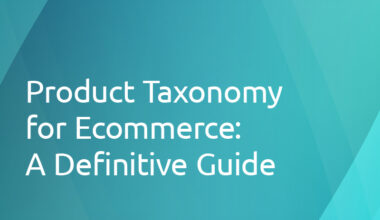In the realm of e-commerce, the way products are organized and classified can make the difference between a sale and a lost customer. Retail product taxonomy refers to the hierarchical classification of products, helping customers navigate an online store effortlessly. Let’s delve into some notable case studies that highlight the importance of an effective product taxonomy.
Case Study 1: The Online Fashion Giant’s Revamp
Background:
An international fashion e-commerce platform with over 50,000 products was facing a decline in sales and increasing cart abandonment rates.
Action Taken:
The brand undertook a comprehensive analysis of their existing product taxonomy. They found that many products were miscategorized, leading to customer frustration. A revamp involved reclassifying products, introducing new categories, and creating intuitive subcategories.
Outcome:
Post-revamp, the platform observed a 35% increase in sales and a 20% decrease in cart abandonment rates.
Lesson:
Even established e-commerce platforms need to periodically reassess and update their taxonomy to align with customer expectations and changing trends.
Case Study 2: DIY Store’s Mobile Success
Background:
A popular DIY e-commerce store was looking to expand its reach through a mobile app. However, the desktop site’s taxonomy was too intricate for mobile navigation.
Action Taken:
The store decided to simplify its taxonomy for the mobile app. They reduced the number of top-level categories, combined similar subcategories, and introduced a powerful search feature with filters.
Outcome:
The app saw a surge in downloads, with 40% of their online sales shifting to the mobile platform within six months.
Lesson:
Taxonomies should be platform-specific. What works on a desktop might not necessarily be effective on mobile.
Case Study 3: The Local Artisan’s Global Footprint
Background:
A local artisan selling handmade crafts had a niche global clientele. However, her e-commerce site was seeing low traffic.
Action Taken:
Instead of the conventional product-first taxonomy (e.g., ‘necklaces’, ‘bracelets’), she chose a material-first approach (e.g., ‘bamboo crafts’, ‘stone crafts’). This resonated with her clientele, who were more interested in the crafting material.
Outcome:
The site witnessed a 150% boost in organic traffic, with customers spending longer durations exploring different materials.
Lesson:
Understanding your audience’s preferences is crucial. A non-traditional taxonomy can sometimes be more effective.
Case Study 4: Tech Retailer’s Voice Search Optimization
Background:
A tech retailer, selling gadgets, observed that many of their customers were using voice search but often landed on irrelevant product pages.
Action Taken:
They revamped their taxonomy to align with natural language processing, favoring categories like ‘latest smartphones’ or ‘waterproof gadgets’ over technical jargon.
Outcome:
Voice search referrals saw a significant increase in conversion rates, with customers finding exactly what they asked for.
Lesson:
With the rise of voice search, taxonomies should evolve to cater to conversational queries.
An effective product taxonomy is not a ‘set it and forget it’ task. It requires constant evolution, understanding emerging trends, and most importantly, tuning into the customer’s voice. These case studies underline the fact that when done right, a solid taxonomy can lead to enhanced user experience, increased sales, and customer loyalty.
If you’re looking for support with your retail taxonomy strategy to better serve your customers and streamline your business, contact our experts at geekspeak.
 1.416.619.5349 Ext.325
1.416.619.5349 Ext.325 







